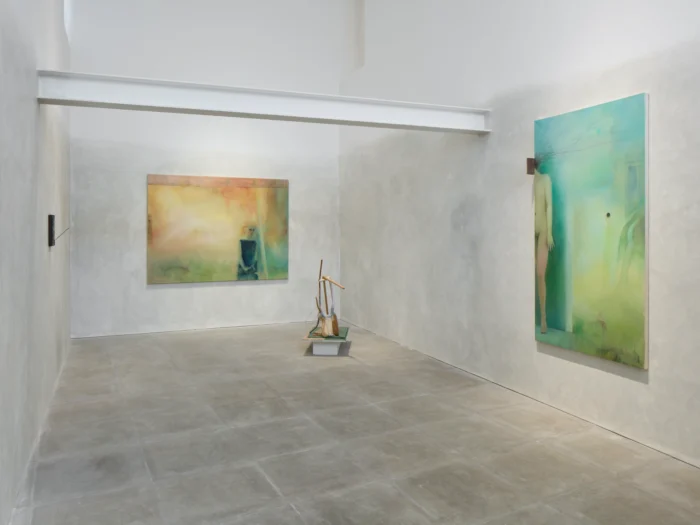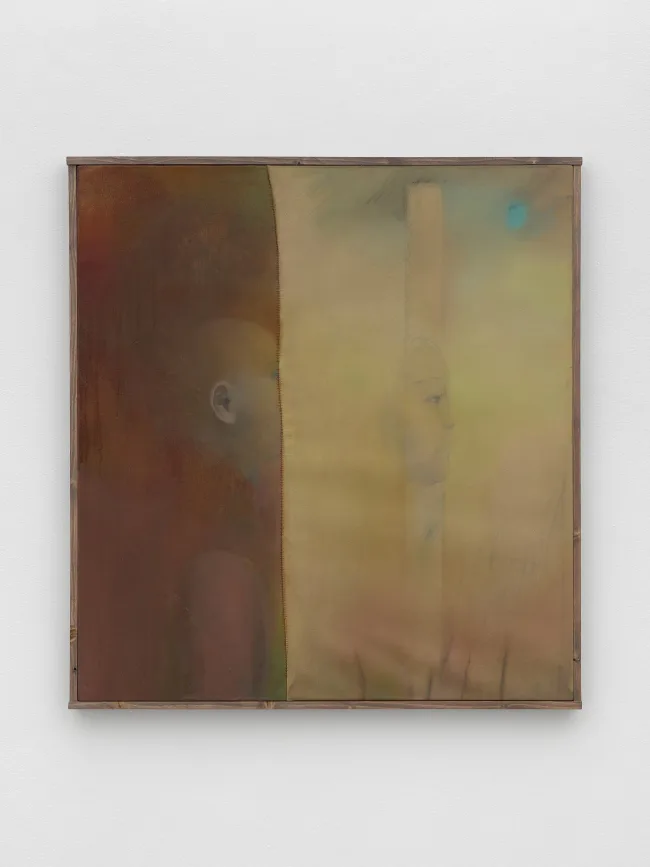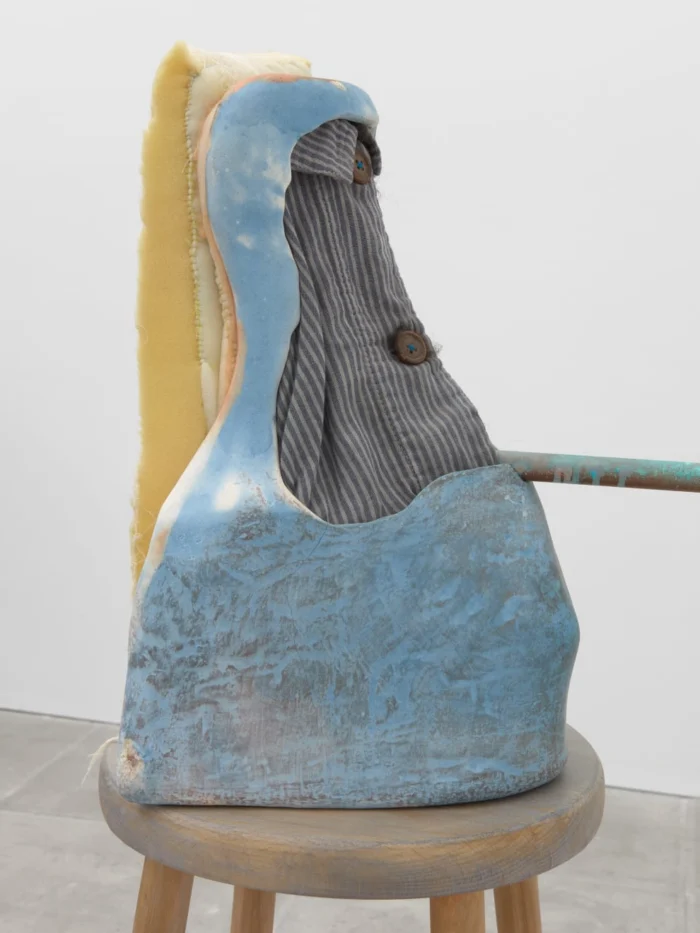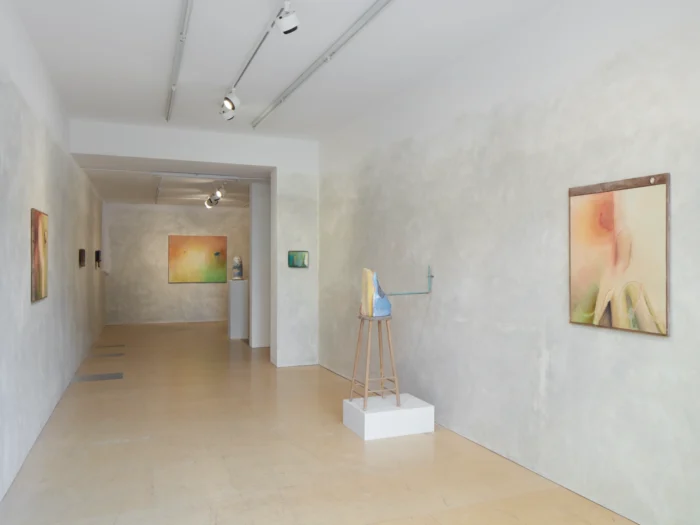
Junyi Lu: (cosset) at The Sunday Painter, London
14 March – 26 April 2025
Images courtesy of The Sunday Painter and the artist
Junyi Lu’s exhibition “(cosset)” at The Sunday Painter is an exercise in spatial poetics and quiet rupture. Echoing the delicate severity of Hanya Yanagihara’s To Paradise, Lu reimagines the gallery as a site of simultaneous shelter and disquiet. The title—parentheses and all—gestures toward the show’s larger preoccupation: a self held gently and paradoxically, bracketed by the conflicting pulls of intimacy and structural constraint. One can’t help but admire how Lu works with a precise, formal restraint that never dulls her conceptual clarity. Every wall, beam, and textile becomes part of an ambient dramaturgy—a choreography of concealment and exposure, history and affect.

Take Liminal Comportment, for instance, which acts as a fulcrum within the show’s softly radical grammar. A previously finished painting is torn and grafted onto new canvas, its fractured seam both violent and tender. Two almost-ghostly figures float across the stitched surface, one awkwardly cleaved at the edge, the other suspended like a question mark. The pole—suggestively architectural—offers no real support. The gesture of stitching becomes an act of caretaking, but also a reckoning with fragmentation. It recalls the sutured bodies of Eva Hesse or the off-kilter melancholia of Paul Thek. But Lu’s voice is unmistakably her own: her formal decisions are born not from pastiche but from a lived sense of dislocation. The work pulses with a low-frequency tension between self-preservation and loss.

Another standout work, Youngest in the Family, turns domestic memory into sculpture, where soft fabrics—pajamas, cheesecloth—are pinched and pierced by copper pipes and wool insulation. Here, the home isn’t refuge but residue. These objects, charged with the trace of bodies and labor, evoke both childhood nostalgia and an unease bordering on the clinical. Lu doesn’t aestheticize trauma, but rather allows its structural contours to emerge obliquely, through material collision. There’s something of Mona Hatoum’s disruptive domesticity here, yet Lu’s palette is quieter, her interventions more elliptical. The discomfort is delayed, then lingers. The installation doesn’t shout—it murmurs, hums, leaks.

This tension—between hardness and softness, exposure and opacity—runs throughout the exhibition. The use of limewash on the walls, giving them a gently weathered patina, feels less decorative than archaeological. It’s as though the gallery itself has been excavated, made to wear its own memory. There’s a refusal of narrative closure here that is deeply generative. Lu’s architectural vocabulary draws the viewer not just into space, but into a state of perceptual instability.
“(cosset)” is a deeply affecting, impressively nuanced debut that refuses spectacle while offering an uncommonly intelligent intimacy. In a time when much installation work can feel bloated or conceptually overdetermined, Lu’s show is a reminder of what happens when material decisions and personal stakes are allowed to coexist without compromise. The result is not just a constructed environment, but a system of thought—elegant, disrupted, and powerfully felt.

